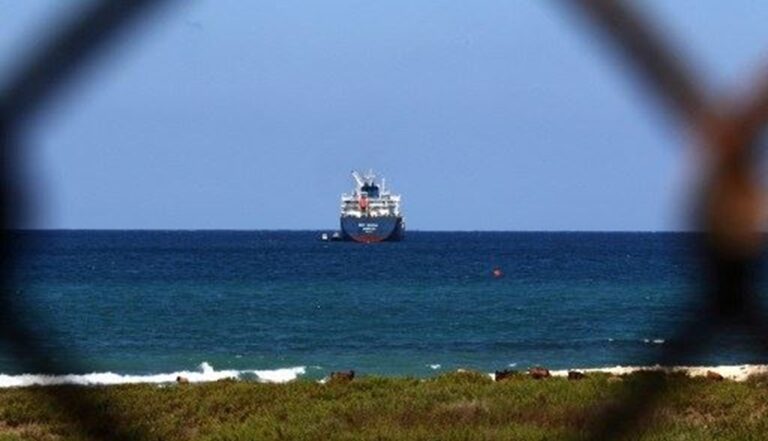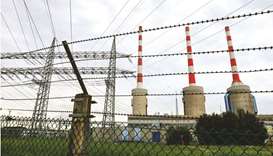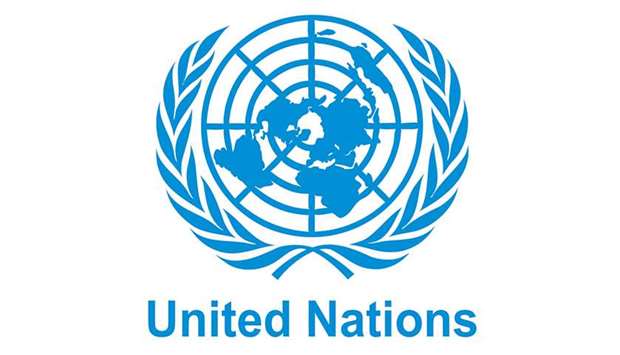Hezbollah has imported fuel from Iran to supply Lebanon, while the US wants to power Lebanon with Egyptian gas and Jordanian electricity. The energy race between the geopolitical rivals has implications for the region.
Lebanon has been mired in economic crisis since 2019. Recently, a severe fuel crisis has gripped the country and has exacerbated the situation considerably.
The fuel shortages hit so hard that a fuel crisis soon became a humanitarian crisis. Lebanese citizens found themselves lining up for hours at petrol stations to receive limited rations of fuel, the price of which has skyrocketed.
Generators, starved of diesel, provided fewer hours of electricity to houses and businesses. Even hospitals were deprived of power.
With the government struggling to manage the crisis, Hassan Nasrallah, the political leader of the Iran-backed Shiite militant group Hezbollah, announced in August that Iranian fuel would be brought into Lebanon.
The first two shipments arrived via Syria on September 16 and 17. Several videos and pictures posted on social media showed people celebrating the arrival of the fuel convoys. A third shipment is expected to arrive this week.
The delivery was not officially approved by the government. The trucks entered via an illegal crossing which violates US sanctions against Iran. So far, the US has not tried to block the shipments.
US counterproposal to contain Iran’s influence
The US didn’t sit back. Following Nasrallah’s announcement, the US ambassador to Lebanon, Dorothy Shea, revealed that the United States was working closely with the governments of Egypt, Jordan and Lebanon, along with the World Bank, to find sustainable solutions for Lebanon’s fuel and energy needs.
On September 8, the US-backed effort to satisfy Lebanon’s energy needs took place in Amman, Jordan, where ministries from Egypt, Jordan, Lebanon and Syria outlined a road map to pipe Egyptian natural gas to Lebanon via Jordan and Syria through the Arab Gas Pipeline (AGP). Another part of the plan involves providing electric power to Lebanon from the Jordanian grid.
Although the US proposals would not alone be enough to satisfy market demand, Roudi Baroudi, chief executive of the consultancy Energy and Environment Holding, told DW that the proposals were good ideas as they could increase the supply of electricity to the country.
He explained that, though the AGP is ready for use, the electric cables passing through Damascus were heavily damaged during the Syrian civil war and needed to be repaired. “The gas from Egypt will be sufficient for 8-10 hours per day. Electricity from Jordan and Syria would add 2-3 hours,” he said.
Iran’s new foreign affairs policy and Syria’s comeback
Technical issues apart, the competition between the US and Iran to help Lebanon in the energy sector has wider implications for the region.
In Lebanon, the Iranian fuel shipment cemented Hezbollah’s powerful image. The new Lebanese Prime Minister Najib Mikati said Iranian fuel imports constituted a breach of Lebanon’s sovereignty, but he didn’t follow with any actions.
For Iran, shipping fuel to Lebanon is a sign of a new vision of its foreign policy, according to Sina Toossi, a senior research analyst at the National Iranian American Council (NIAC). He told DW that Iran wanted to become a regional power and neutralize the effects of imposed sanctions by increasing trades with its neighbors.
“New Iranian President Ebrahim Raisi’s foreign policy strategy focuses on the region and increasing regional economic interconnectivity and interdependence. However, if the US doesn’t enforce sanctions, it may be a sign that Biden has a good intention to get the nuclear deal talks with Iran back on track,” he said.
Conversely, the United States is trying to contain Iran’s influence in the region by backing the proposals to provide natural gas and electricity to Lebanon. However, it found itself in an awkward situation. By involving Syria in the plan, which already expressed its availability, the US would break its own sanctions imposed on Bashar Assad’s government through the 2019 Caesar Syria Civilian Protection Act.
Chris Abi-Nassif, Lebanon program director at the Middle East Institute, told DW that the involvement of Assad’s government in the plan might be perceived as the US reaching out to Syria.
“Syria, which had effectively been taken out of the Arab world equation, has been suddenly put back in the picture,” he said. Furthermore, Syria may take not only a political advantage by letting gas and electricity pass through its territory but also profits, according to Abi-Nassif.
Fueling Lebanon doesn’t solve the crisis
Lebanon has had an issue in the energy sector since the end of the civil war in 1990. For decades, the political class has developed no long-term plans in the energy sector to satisfy market demand.
The Iran-Hezbollah initiative to supply fuel won’t be enough to satisfy the country’s demand for a long time, although Lebanese may breathe a sigh of relief in the immediate term.
Meanwhile, the US proposals are still being negotiated. It may take several months before they make any difference.
Those proposals may relieve the crisis, but it won’t resolve the issue of paying for gas and electricity, according to Abi-Nassif.
“The fundamental question is how Lebanon will pay for natural gas and electricity, ” he said. “To answer this question, Lebanon should focus on how to settle the debt crisis, restructure the banking system, and how to distribute losses. This is the key to unlock the long-term prospect not only for the energy sector but for any other single sector in Lebanon as well.”










AMMAN – The hottest day on record in Jordan since 1960 was a staggering 49.3° Celsius, (120.7° Fahrenheit) in July 2018, one month after I became prime minister. Jordan is not unique: heat waves have been causing record-high temperatures in countries from Canada to Australia in recent years. The effects of climate change (including increased frequency and severity of floods, hurricanes, and droughts), while felt locally, demand a global response, which should set binding targets that take into account countries’ contributions to the problem and to the solution.
Jordan has been actively pursuing policies and programs to reduce carbon-dioxide emissions. Over the past 15 years, Jordan’s annual emissions per capita fell from 3.5 tons to 2.5 tons. But Jordan, like the vast majority of countries, accounts for a negligible share of global CO2 emissions – just 0.04% annually. So even if Jordan was to turn its whole economy green overnight, it would hardly make a dent. This does not absolve us of responsibility, but we cannot overlook the fact that emissions are concentrated: the top 20 emitters account for almost 80% of the annual total, with the United States and China alone accounting for 38%.
In many countries, the ramifications of climate change for water supply have been staggering. In the case of Jordan, it made an already tight constraint much more acute. Rainfall was previously the savior for rural communities that engaged in seasonal rainfed agriculture and herding on semi-arid land. Over the last decade, however, a steady decline in average annual rainfall and an increase in the frequency and severity of droughts have undermined these modes of agriculture, deepening the socioeconomic divide between rural and urban areas.
Jordan is by no means unique: the World Health Organization estimates that half of the world’s population will be living in water-stressed areas by 2025. In essence, what was previously a regional challenge has now become a serious global governance issue with environmental, political, and economic ramifications.
More broadly, other manifestations of climate change, and the lack of an internationally coordinated response to them – not to mention to additional threats such as the COVID-19 pandemic – suggest that something is seriously wrong at the global level. According to the recent sober assessment by the United Nations Intergovernmental Panel on Climate Change, the world will not meet the 2015 Paris climate agreement goal of limiting global warming to well below 2°C unless it makes huge additional cuts in CO2 emissions.
Quite simply, the results of the world’s climate efforts are dangerously inadequate. According to the Climate Action Tracker, current policies put the world on course to be an alarming 2.7-3.1°C warmer by 2100, relative to pre-industrial levels. Yes, many emerging green technologies are promising and should be supported. But in the absence of a global approach, these innovations risk merely redistributing the impact of climate change among countries and regions.
Raising awareness and nudging (and shaming) policymakers is necessary, but not sufficient to avert what UN Secretary-General António Guterres has referred to as a “climate catastrophe.” Climate-change mitigation must be pursued as a global public good. The problem is that such goods are plagued by collective-action problems, because the costs tend to be spatially and temporally concentrated while the benefits are diffuse. These difficulties can be tackled only by global governance structures that reduce the cost of collective action, internalize externalities, and counter short-term biases in decision-making.
To address climate change more effectively, we need global governance arrangements that amount to a new global social contract. Existing international governance structures can serve as a foundation for these new institutions, but will need to be amended and supplemented to address specific problems related to public goods and collective action.
For starters, we need a governance structure whose jurisdiction is limited to global public goods that cannot be provided adequately at the national level. Nation-states would be free to opt in and opt out, with the benefits of opting in outweighing those of opting out. Decisions would be taken on a majoritarian basis, with no single country having veto power. There would also be an appeals and adjudication process that allows decisions to be challenged.
Second, a custodial entity would keep track of global natural wealth accounts to address intergenerational equity issues. This entity should be able to place items on the global governance institution’s agenda and to appeal decisions.
Lastly, a regime of incentives and disincentives would aim to preserve nature and biodiversity and tax those who consume it, taking wealth and income disparities across countries into account.
Establishing global governance mechanisms that focus on the public-goods and collective-action challenges of climate change will not be easy. Concerns and fears related to a “democratic deficit” and the need to protect national sovereignty are legitimate, and cannot simply be brushed aside.
Nevertheless, we are not starting from scratch. The World Trade Organization provides an example of a strong and successful global governance structure with binding rules. It is thus both ironic and sad that the WTO has failed to incorporate trade-related environmental and human-rights issues into its regulations in order to ensure a level international playing field. After all, with its sanctioning authority, the WTO is best positioned to link issues such as greenhouse-gas emissions and labor rights to trade rules.
Jordan cannot successfully tackle today’s global climate challenges on its own. Nor can the Middle East, owing to regional conflicts and rivalries. Now that the world has become a village, the task facing the region is instead to agree with other countries – our fellow villagers – on how to mitigate our own excesses and avert an existential threat. This can be achieved only by finding suitable ways to hold ourselves and each other accountable. The solution lies in establishing a global governance system that is based on the nation-state but has the capacity to sanction harmful behavior.
Some might regard the idea of creating such a structure as far-fetched. But unless we do, there is scant hope of preventing the climate crisis – already apparent in Jordan and around the world – from continuing to destroy countless lives and livelihoods.
OMAR RAZZAZ
Writing for PS since 2021
1 Commentary
Omar Razzaz is a former prime minister of Jordan.